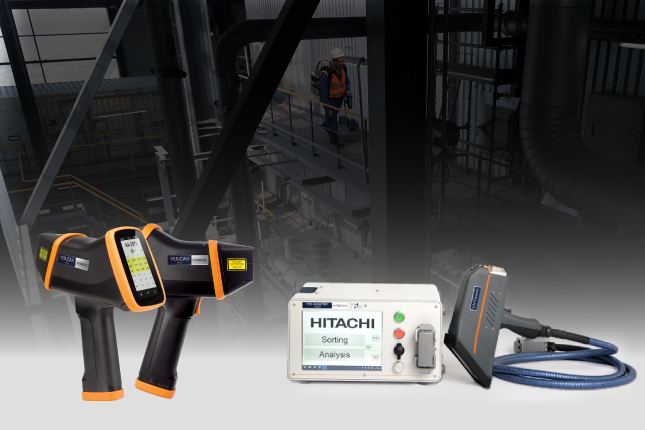Few handheld LIBS (laser induced breakdown spectroscopy) analyzers now on the market boast their ability to test for carbon. This is an exciting development, but there is a ‘watch out’. Their low detection levels still have a long way to go.
If your analysis needs are more complex or critical, and you need to detect other elements too like boron, sulfur, phosphorous and nitrogen, then an OES (optical emission spectrometer) analyzer is likely to be the right choice. A mobile OES analyser from Hitachi High-Tech, like the PMI-MASTER Smart, offers ultimate performance under pressure.
How to choose the right analyzer
Handheld LIBS, like the Hitachi Vulcan, is portable, lightweight and requires minimal user training normally. It has its place for applications like sorting in scrap and incoming inspection in manufacturing industries.
It’s essential to understand though that there are precision and accuracy limitations. Take an alloy like carbon steel for example. Its hardness, melting point, strength, weldability and workability are affected by elements at levels below 100ppm that a laser-based analyzer like LIBS can’t identify accurately.
LIBS may be marketed as being able to detect them, but there’re no promises about matching the accuracy levels of OES, as our Ultimate Guide: LIBS vs OES reveals. Think about how confident you need to be with your testing results. What level of confidence do you need to impart in customers or stakeholders…90%? Or 100%? As getting it wrong can have consequences ranging from a product recall and company brand reputation to costing lives.

OES technology has been established for years. That’s why it’s widely trusted by engineers, QC managers and scientists. Spark optical emission spectrometers excel at providing full chemistry of critical alloy elements that handheld X-ray fluorescence (XRF) and LIBS analysers can’t at low detection levels: carbon, phosphorus, sulfur, boron, arsenic and tin in low alloys and stainless steels, and nitrogen in duplex steels.
Investing in OES analysers future-proofs your analysis operations should you ever need to detect trace elements like boron in steel. In alloyed steel, boron has positive properties such as increasing hardness in steel alloys – great for construction. However, the limit for boron to be classified as alloyed steel is just 0.0008ppm. If an incorrectly graded alloy ends up in a car, a building or a machine and it fails, there can be catastrophic consequences extending to court cases and even loss of life.
OES user-experience
With an OES analyser you can still enjoy the benefits of mobility and its low weight factor. Our PMI-MASTER Smart is the only portable analyser on the market. Weighing just 15kg it can be taken up a ladder, down a shaft, wherever it’s needed. The PMI–MASTER Pro2 is a mobile version with lightweight probes.
All of our OES models are made in Germany to stringent quality checks and testing, designed to ensure the products perform in the harshest environments or in a thorough laboratory environment. The rechargeable battery pack provides hours of power when you’re away from the mains supply. With more than 12 million records for more than 350,000 materials on the GRADE database, you can ensure you’re meeting standards from 69 countries - a truly global solution.
With low operating costs and results within seconds, mobile OES analyzers are a versatile solution that can meet a range of analysis needs, now and into the future. To accurately determine the chemical composition of a full range of alloys, stationary and mobile OES analysers remain the right choice.
What next?